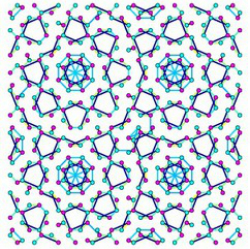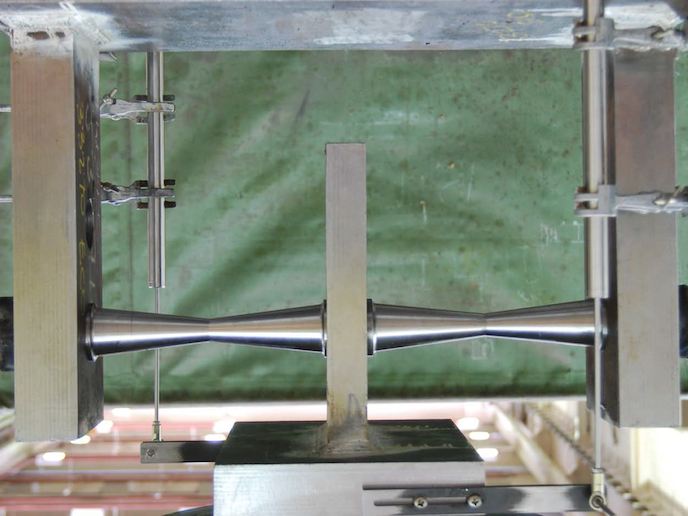Quasicrystals are ordered but non-periodic
An ordering is non-periodic if a shifted copy will never match exactly with its original. In two dimensions there are many sets of simple tiles that can non-periodically completely cover a surface. Quasicrystals extend the property into three dimensions. The SPINSINQUASICRYSTALS (Magnetic moments in geometrically frustrated systems with quasiperiodic order and disorder) project worked on models to get a better insight into the magnetic properties of quasicrystals. An important question is how their exotic electronic properties influence their magnetism. Investigation focused on studying theoretical models of rare-earth quasicrystals. This is a common type of magnetic quasicrystal, which has well-defined local moments at concentrations of 5-10 %. These interact via long-range magnetic interactions (so-called RKKY - Ruderman-Kittel-Kasuya-Yosida interactions) and are mediated by conduction electrons. Researchers developed an improved numerical method to compute the form of the RKKY interactions using a tight-binding Hamiltonian defined on quasiperiodic tilings. In a second step, the magnetic properties of quasiperiodic systems with RKKY interactions were studied using extensive Monte Carlo simulations. For all systems, it was found that there were strongly coupled spin clusters with weak inter-cluster coupling on certain patterns of the tiling and the formation of long-range magnetic order at low temperature. The formation of strongly coupled clusters and their fluctuations even at very low temperatures appears to be consistent with experimental observations. In contrast, the nature of the ordering transition in the model shows clear differences from recent experiments, which typically show a spin-glass-like freezing of the magnetic moments at low temperatures. Disorder of the atomic sites is very common in quasicrystals. To model site disorder, a random potential was added to the conduction electrons. Calculations of the RKKY interactions, combined with the Monte Carlo simulations, demonstrated that long-range magnetic order in quasiperiodic systems is destroyed at a finite disorder strength.






